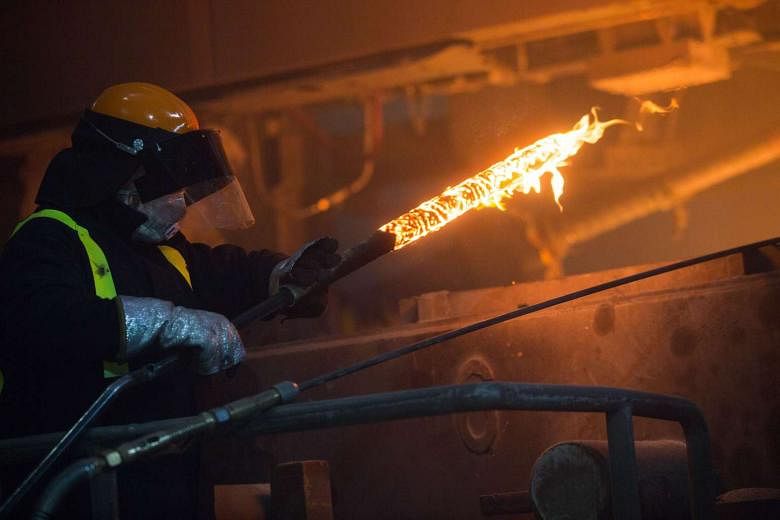BEIJING • For commodities, it is like the 21st century never happened.
The last time the Bloomberg Commodity Index of investor returns was this low, Apple's best-selling product was a desktop computer, and you could pay for it with francs and Deutschemarks.
The gauge tracking the performance of 22 natural resources has plunged two-thirds from its peak, to the lowest level since 1999. That shows it is back to square one for the so-called commodity super cycle - a hunger for coal, oil and metals from Chinese manufacturers that powered a bull market for about a decade until 2011.
"In China, you had 1.3 billion people industrialising - something on that scale has never been seen before," said deputy chief investment officer Andrew Lapping at investment management firm Allan Gray. "But there's no way that can continue indefinitely."
If slowing Chinese growth, now headed for its weakest pace in 25 years, put the first nail in the coffin of the super cycle, the US Federal Reserve is about to hammer in the last. Its first interest rate increase since 2006 is expected next month, helping push the US dollar up by about 9 per cent against a basket of 10 major currencies this year.
That only adds to the woes of commodities, mostly priced in US dollars, by cutting the spending power of global buyers of raw materials and making other assets that generate yields such as bonds and equities more attractive for investors.
The Bloomberg Commodity Index takes into account roll costs and gains in investing in futures markets to reflect the actual returns. By comparison, a spot index that tracks raw materials prices fell to a more than six-year low on Monday, and a gauge of industry shares to the weakest since 2008 on Sept 29.
The biggest falls in the mining index, which is down 31 per cent this year, are copper producers First Quantum Minerals, Glencore and Freeport-McMoran.
With record demand through the 2000s,commodity producers such as Total, Rio Tinto and Anglo American invested billions in long-term capital projects that have left the world awash with oil, natural gas, iron ore and copper just as Chinese growth wanes.
Oil is among the most oversupplied. Even as prices sank 60 per cent from June last year, stockpiles have swollen to an all-time high of almost three billion barrels, says the International Energy Agency. That is due to record output in the US and a decision by the Organisation of Petroleum Exporting Countries to keep pumping above its target of 30 million barrels a day to maintain market share and squeeze out higher-cost producers.
A Fed move on rates and accompanying gains in the dollar will make it harder to mop up excesses in raw-materials supply. Mining and drilling costs often paid in
other currencies will shrink relative to the dollars earned from selling oil and metals in global markets as the US exchange rate appreciates.
While some world-class operators like Glencore plan to cut copper and zinc output, others such as iron ore producers BHP Billiton and Rio Tinto are locked in a "rush to the bottom" as they seek to drive out competitors by maintaining supply even as prices slump, said Mr David Wilson, director of metals research at Citigroup. "With the momentum on the downside, it's very difficult to say that we're reaching a bottom," he added.
BLOOMBERG

